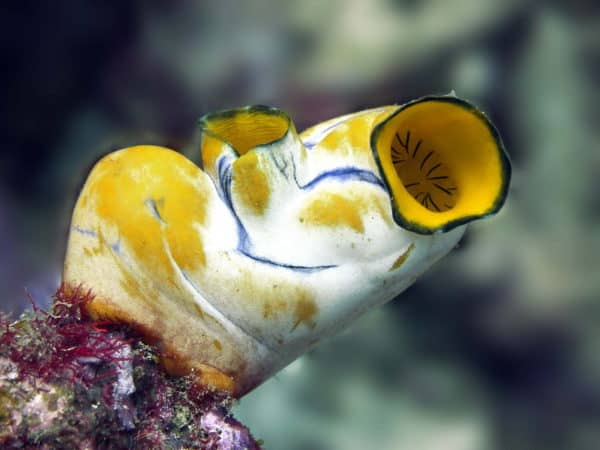
 The notorious sea squirt may have a cute name but it’s currently wreaking havoc on marine ecosystems around the world. As a new study reveals, the invasive tube-like species also known as ascidians are reaching every corner of the globe primarily by hitching rides on shipping traffic.
The notorious sea squirt may have a cute name but it’s currently wreaking havoc on marine ecosystems around the world. As a new study reveals, the invasive tube-like species also known as ascidians are reaching every corner of the globe primarily by hitching rides on shipping traffic.
One of the most successful of invasive marine species, sea squirt ascidians are invertebrates that suction to rocks and other surfaces and feed by siphoning in water through their tube-shaped bodies. Living in colonies, the animals are known to spit out water when pulled from the sea, hence the name.
Sea squirts are a major nuisance for the aquaculture industry, as they proliferate quickly and clog up ecosystems, cover the bottoms of boats and create extra drag for marine vessels. Their pervasiveness stems from their ability to endure all sorts of environments, including those with high levels of pollution, and to survive in waters of varying temperatures and salinities, thus making them difficult pests both to local fauna and ecosystems but also to watercraft, marinas and harbours.
“These organisms are well known in the US and Canada,” says Dr. Noa Shenkar, lead author of the new study and researcher at Tel Aviv University’s Department of Zoology and the Steinhardt Museum of Natural History, in a statement.
“In Israel, they are passing through the Suez Canal, latching onto ropes and the bottom of the ship,” says Dr. Shenkar. “They’re filter feeders, so they cover and clog every surface they latch onto, creating a lot of drag for the ship and damaging marine biodiversity in their new environments. They’re a major threat to our coasts and are very costly to ship owners.”
The study looked at 45 marine vessels, both commercial and military, that were pulled from the sea to be cleaned at five different shipyards along the Mediterranean coast of Israel. Researchers found non-indigenous ascidians on every second vessel, with the highest abundance of ascidians coming on military vessels, despite the fact that the hulls of military ships are de-fouled more often than commercial boats and ships.
“Military vessels are cleaned every six months but are not being properly cleaned for these invasive species,” said Dr. Shenkar. “These species hide on the sea chest, under the bottom of the boat. Maintenance for commercial ships is much more thorough, including repainting and hosing down every nook and cranny of the vessel.”
The researchers found that the majority of sea squirts detected on vessels were located in so-called “niche areas” on the vessel surface, which represent veritable hot spots for the animals. Especially noted were the sea chest areas, below the water line and designed for water pumping, and the propellor bearing shafts.
The study’s authors argue that the typical procedure employed to keep subaquatic organisms from attaching to a vessel’s hull, involving high-pressure fresh-water washing along with the application
of anti-fouling paint is less effective against sea squirts who seek out the boat’s niche areas. Instead, they recommend the use of a silicon elastomer coating more commonly applied to power station pipelines.
Leave a Reply
You must be logged in to post a comment.



 Share
Share Tweet
Tweet Share
Share




Comment